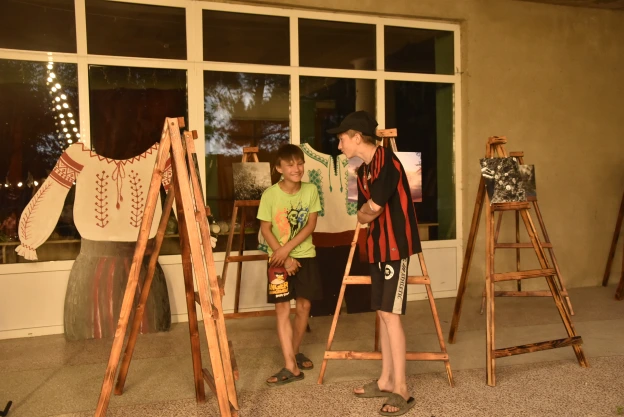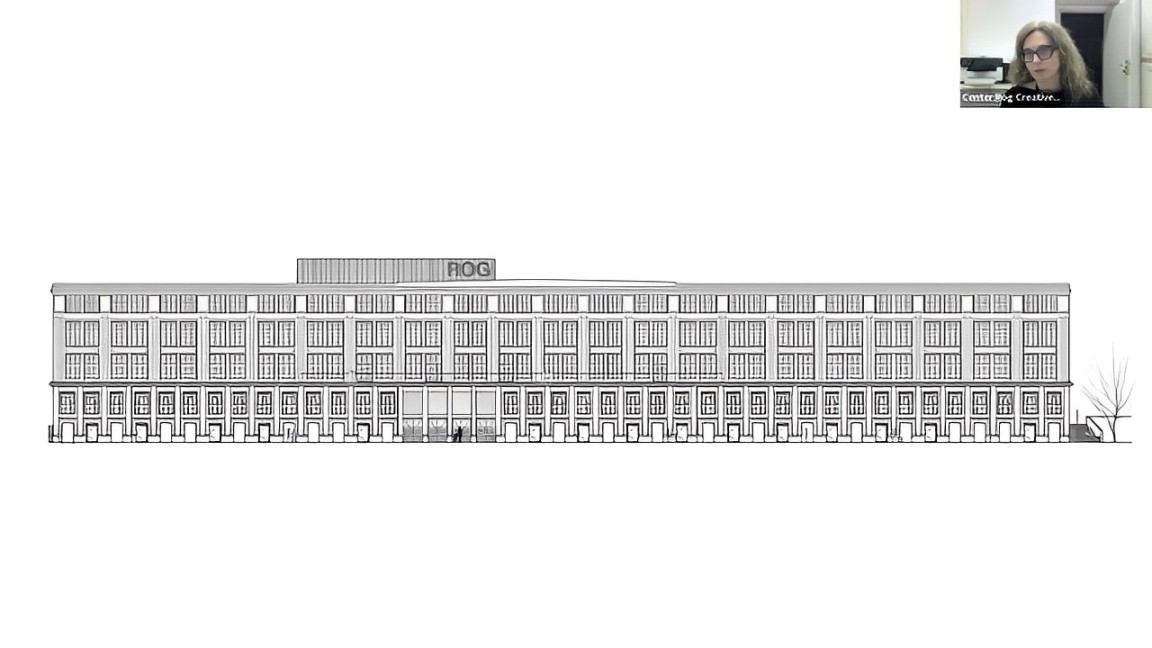„Creative Moldova” – comments

The Coalition of the Independent Cultural Sector (CSCI) along with a group of organizations and independent artists have examined the statement issued by the Government Decision regarding the approval of the National Program for the Development of Creative Industries „Creative Moldova” (hereinafter: draft) published on State Chancellery’s participation platform for public consultation. Collectively we have derived the following comments and inconsistencies:
1. The draft does not respect the provisions of Law No. 100 of 2017 regarding normative acts which makes reference to the basic requirements for the structure and the content of the normative act. However, according to Art. 6 par. D „decisions and ordinances of the Government” fall under the scope of this law, thus making the concerning draft a normative act. Further on, Art. 41 of Law No. 100 of 2017 regarding normative acts lists the constitutive elements of a normative act and stipulates at par. D the very need for general provisions of the normative act. Moreover, Art. 45, par. C, stipulates the content of the general provisions of the normative act and specifies that it must explain terms (notions) and define the concepts with which it operates. In other words, the draft proposed for consultation does not contain a glossary or list of concepts!
2. The project infringes upon the provisions of Art. 4 (4) of Law No. 100 of 2017 regarding normative acts which provides that „the normative act must organically integrate into the existing normative framework and consequently:
a) the drafted normative act must be correlated with the provisions of the normative acts of a higher level or of the same level with which it is connected;
b) the drafted normative act which is drawn up on the basis of a higher-level normative act cannot exceed the limits of competence established by the higher-level act, nor can it contravene its purpose, principles and provisions.”
In its current form, the draft is not correlated in any way with the provisions of the normative acts in the field of culture – the Culture Law (no. 413 of 1999), the Law on the Protection of Movable National Heritage (No. 280 of 2011), the Law on the Protection of Monuments (No. 1530 of 1993) etc. Worse off, the draft does not even make a reference to any of these laws!
Under these conditions, it is impossible to pronounce on the integration or correlation of the draft with the current legislation in the field of culture.
3. In the absence of (1) a glossary of terms and (2) a correlation with the existing legal framework in the field of culture, the authors of the draft make arbitrary and voluntary use of terms such as „culture”, „creative industries”, „fundamental creative fields”, „cultural industries”, „cultural field” etc. However, the meaning of the term „culture” is defined in Art. 2 of the Culture Law no. 413 of 1999 as “the totality of modes of thought, feeling and action from the material to the spiritual spheres of society and their derived value” while other concerning terms are not defined anywhere else in the legislation of the Republic of Moldova!
Although the draft cites the definitions for „creative industries” given by UNESCO and the United Nations Conference on Trade and Development (p. 7), none of them are, at the moment, recognized or incorporated into the cultural legislation of the Republic of Moldova.
4. „Creative industries”- the main field of regulation the draft concerns itself with, is not defined in any way with reference to the existing legislation in the field of culture and economy in the Republic of Moldova. The authors indicate various figures about the sector of „creative industries”, such as the number of entities, employees, revenues in 2021 (p. 6) and mention that a study by the Ministry of Culture would have „found that there are more than 7 integrated creative subsectors”, (p. 7) but they do not refer to this study. Additionally, the authors take the liberty to erroneously include subsectors within the sector that do not pertain to it. However, as the authors themselves admit, the National Bureau of Statistics does not collect data on „creative industries”.
Whenever the authors mention the value of the „creative industries” sector, they point to the fact that this data is provided by the National Bureau of Statistics, without explaining how they compiled these indicators and how they were included in the calculations. In the absence of a methodology detailing which sectors and subsectors of the national economy are included in the „creative industries” branch, the figures about the number of entities and employees have no meaning and cannot be used to confirm or deny anything!
The absence of clear definitions for „creative industries” along a methodology for delimiting them from other „industries” and from the cultural sector, turns the discussion about creative industries into a slogan, in which the use of pretentious catchphrases such as ” driving force” or „transformative role” is supposed to convince the reading public that the authors of the draft know what they are talking about.
Moreover, the absence of a definition for „creative industries” and their specific link with technology and IT development, reinforces the contrast between creative industries (whatever they mean by it, but usually regarded as IT, advertising, digital content) and traditional culture, especially the sectors that in principle cannot be digitized (such as community events, artistic installations, theater-forum, etc.).
5. The authors themselves mention several times in the text „the lack of research and consistent data regarding the creative industries and their subsectors” (p. 10), „the impossibility of accessing a comprehensive picture of the contribution of the creative industries to the economy” (p. 10), „lack of mapping of creative industries at local, city or regional level” (p. 11), lack of „research and evaluation of programs in all sectors of creative industries – e.g. assessing the impact of cultural investments, studies of feasibility for creative industries and cultural infrastructure, strategies and assessments’ (p.11).
At the same time, the lack of these fundamental and basic data about the sector does not prevent them from making pathetic statements, which have no empirical basis and which we deems as unjustified: „In the Republic of Moldova, creative industries represent a fundamental driving force for a sustainable future. With the support of the Government, creative industries in Moldova show talent and desire to assume a transformative role in the future of the country’s population.” (p. 10). In other words, even if they do not know what this sector of the creative industries means, its size, its functions and its contribution, the authors believe (on what grounds?) that it is capable of assuming a transformative role!
6. The document adopts an uncritical attitude towards trends of „digitalization” and the processes that accompany it – such as streaming, the use of artificial intelligence technologies, computer-generated voices and images – all which can affect both labor relations and the status of cultural workers, as well as cultural policy as a whole. An example of this is the current strike by Hollywood actors and screenwriters organized by the SAG-AFTRA unions demanding protections against the use of artificial intelligence (AI) to prevent it from generating scripts or reproducing their voice and image.
7. The draft has a strictly economic approach, utterly disregarding other dimensions of culture – such as its social value, its role in cohesion or resilience.
Point 13 stipulates that the Government needs to grant an „increased attention to the social value of the cultural sector. The social outcomes of culture and social industries came to the fore and were highlighted through the ways in which culture is perceived and valued by communities, recognizing the essential contribution of culture to the well-being of communities.” (p. 12). At the same time, the rest of the draft does not address the social value of the sector in any way, only the economic perspective being present.
However, the social dimension of culture and creative industries, i.e. harnessing the potential of culture and cultural diversity for social cohesion and well-being, represents one of the main objectives on the New European Agenda for Culture from 2018.
In order to integrate the social value of culture, the document should have contained provisions on: gender equality, participation and inclusion through culture, combating discrimination and hate speech, increasing social cohesion, attention to environmental issues and the integration of the environmental dimension (preventing and combating climate change) in cultural actions and policies, promoting labor rights and standardizing practices, including at the transnational level, regarding the rights, status and social protection of the cultural worker.
8. The international examples presented in the draft as „successful” practices are inconclusive. The Creative Denmark Program (p. 17) does not represent a state program in the field of cultural policies, as the „Creative Moldova” program is intended to be. It is rather a private non-profit initiative financed both by the Danish Ministry of Culture and the Confederation Danish Industry, Chamber of Commerce and Industry, etc. with the role of promoting „Danish creativity„. In other words, a simple media platform.
The Creative Finland project (p.17) is also a simple media platform which provides support to Finland’s creative industries through communication and networking. Likewise, the other examples mentioned e.g. Creative Sweden, Iceland – represent private initiatives of companies and advertising agencies.
Creative Ireland Programme, also mentioned in the draft, is the only program implemented by a state authority – Ireland’s Department of Tourism, Culture, Arts, Gaeltacht, Sport and Media. However, unlike the „Creative Moldova” program, the Irish Programme is inherently correlated with the legal and national policy framework in the field of culture, part of the National Cultural Policy Framework until 2025 – a document which frames the creative industries in a wider context and „establishes general level values and principles to underpin public policies and planning. It recognizes that every person has the right to enjoy, create and participate in the culture of their country.”
9. The authors of the draft mention that: „through the Program, the implementation of a series of actions is aimed at directly contributing to the implementation of General Objective no. 4 provided for in the National Development Strategy „European Moldova 2030”. This objective is aimed at raising the level of culture and personal development, as well as policy directions and priority interventions, and follows:
Supporting independent artistic initiatives, including by identifying spaces for workshops, rehearsals, performances, residencies and other activities, but also the development of sustainable financial mechanisms for supporting the independent scene (O4.1; O4.2.; O4.3); Establishing a mechanism national funding for the restoration and enhancement of cultural heritage (O1.2.; O4.1 – O4.3; O7.1; O7.3; O9.1.); Creation and consolidation of an educational system in regards to cultural heritage, its development, research and innovation (O1.2; O4.1 – O4.3; O7.1; O7.3; O9.1); Encouraging cultural heritage restoration initiatives from communities and local authorities (O1.2; 04.1 – O4.3; O7.1; O7.3; O9.1).
In this way, the Program will contribute to building the necessary capacities for coping with current crises, strengthening resilience to future crises, as well as developing a sustainable and inclusive Republic of Moldova.”(p. 2)
Aren’t these cited objectives much more related to the development of a culture that is seen as a tool of civic education, a catalyst of solidarity, social cohesion and values instead of a culture that is regarded as an industry/commodity to be exploited for profit?
This draft aims to semantically replace the term ‘culture’ with that of ‘creative industry’ and push for the commercialization of culture, which can lead to its homogenization and the loss of cultural diversity. Besides, such approaches to culture will lead to the exclusion of marginalized groups, alternative discourses to the state ideology, critical and social engagement. As Richard Florida himself recognizes, his theory of the ‘creative class’ – an engine of urban development and growth and an extensively applied strategy of the ‘creative city’, ultimately leads to the intensification of social inequalities: „It is not only a vicious circle, but also an unsustainable one – from an economic, political and moral point of view.”
Based on the points listed above, we qualify this document as unprofessional and deficient in knowledge pertaining to the cultural field and its correlation with the current cultural legislation and, therefore, request its withdrawal.
Signatories:
The Coalition of the Independent Cultural Sector (CSCI)
AO Center for Policies, Initiatives and Research „Platforma”
AO Active Communities for Participatory Democracy in the City
Prin trimiterea adresei de e-mail, dați acord cu prelucrarea datelor și politica de confidențialitate.



